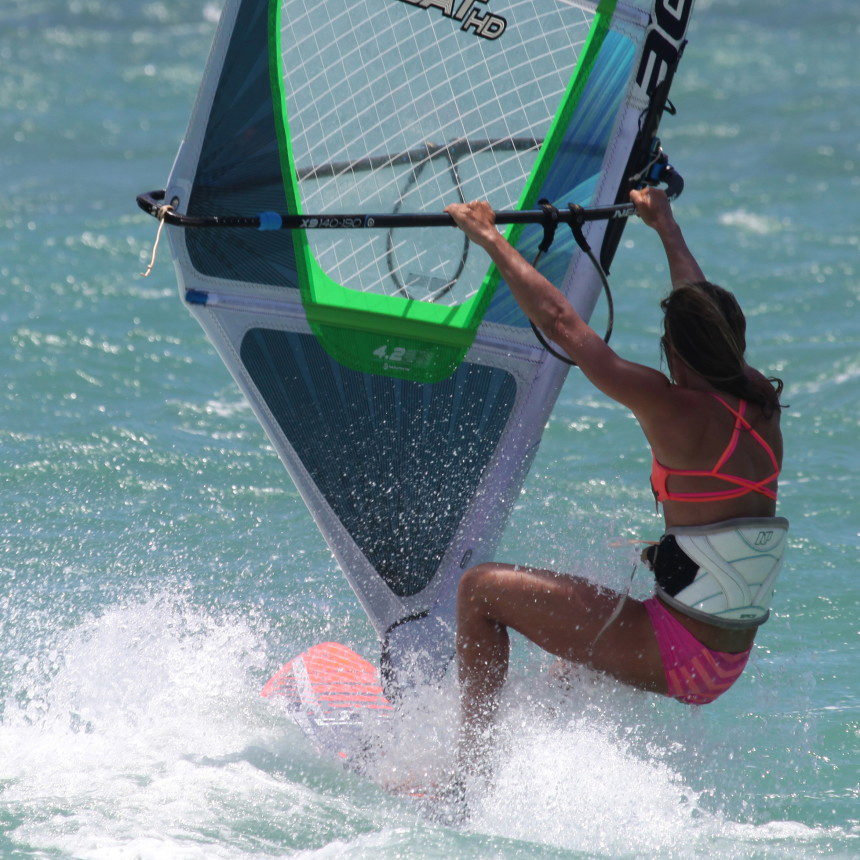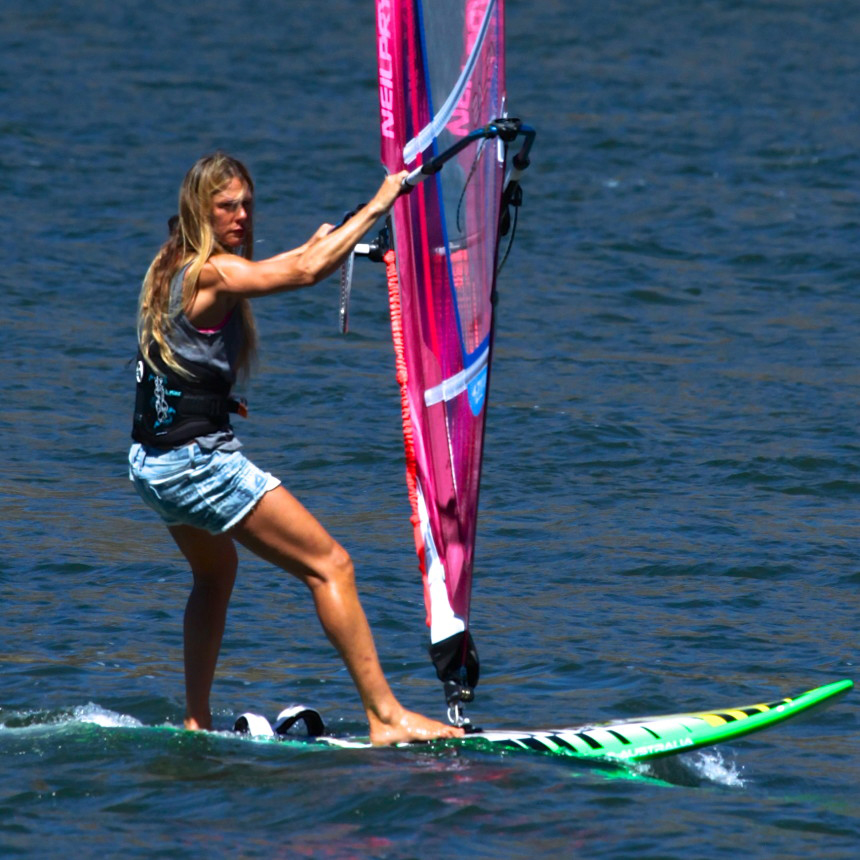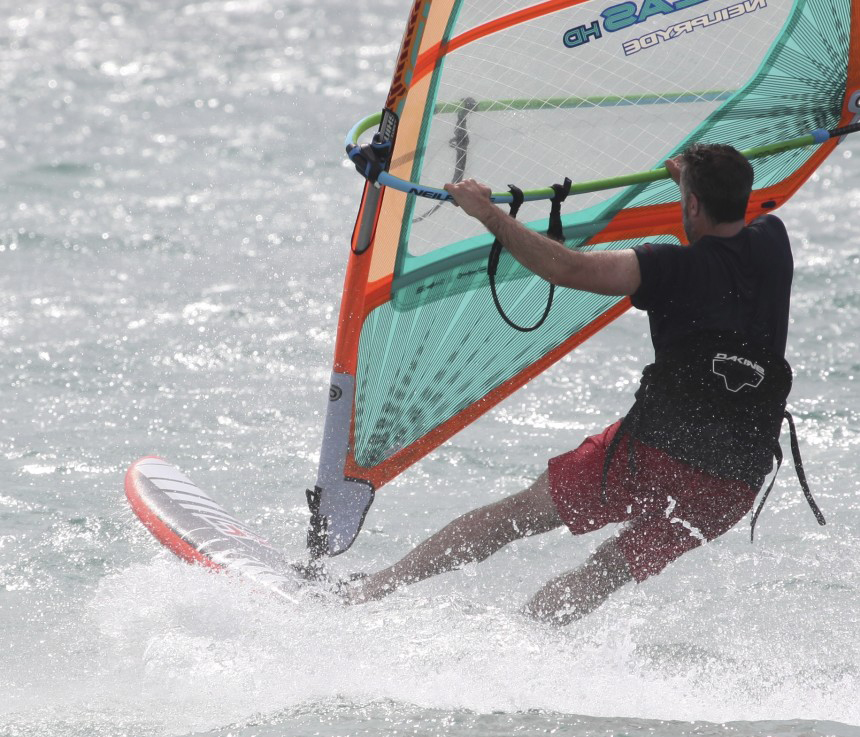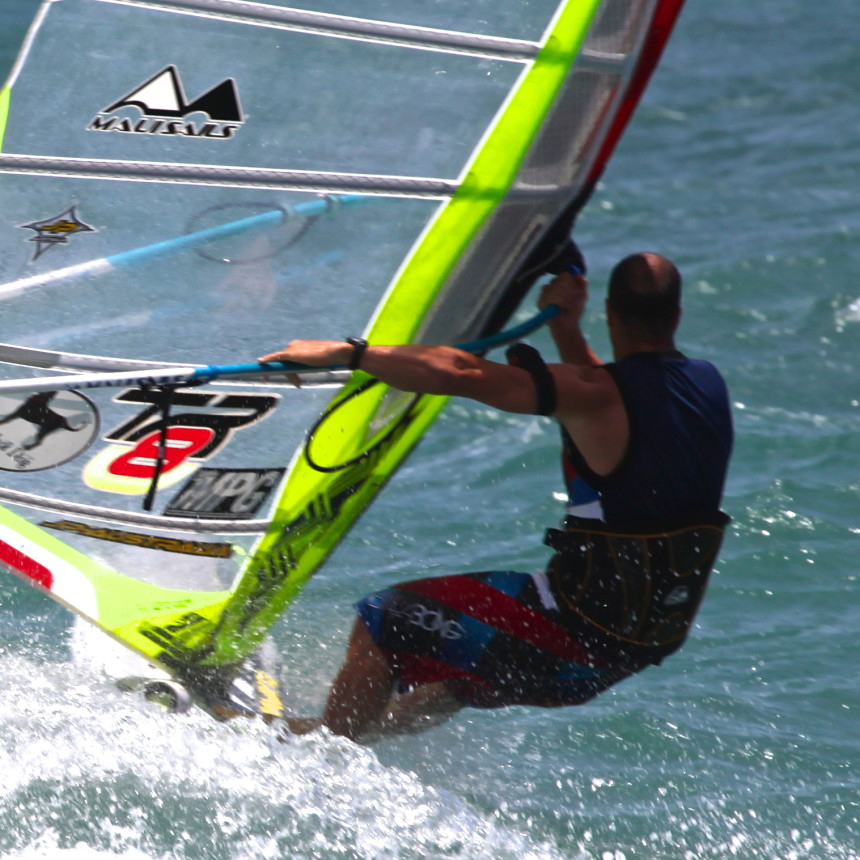Flipping Sails

Perfecting our rig flipping technique can be practiced all summer long. In all strengths of wind- light winds on SUPs with a sail and/or in high winds to come out of your gybes planing.
The Trick is to Actually Perfect the Form

The same technique is required to flip the sail for beginners, intermediates and experts- It’s used for non-planing gybes, slam gybes, planing gybes, high wind and lighter wind gybes.
Light wind days are your windsurfing Tai Chi opportunities. Jump on SUP or a very large stable windsurfing board- Flip the sail (correctly) over and over again until you no longer need to look at your hands and your form is flawless-
Do this all summer long and you will be shocked what comes out of it the next time it’s windy. You will probably find yourself racing out of your gybes planing and beating the pack!
WARNING: If you go and practice bad form—You will permanently lock the mistakes into your Muscle Memory. Imperfect form is: Looking at your hands, dropping the sail behind you, missing BOOM SLIDE, not using Rescue Stance, Not getting your back hand back before you engage the turn, yanking on the sail with the back hand when you reach for the new side etc…

“Muscle memory has been used synonymously with motor learning, which is a form of procedural memory that involves consolidating a specific motor task into memory through repetition. When a movement is repeated over time, a long-term muscle memory is created for that task, eventually allowing it to be performed without conscious effort. This process decreases the need for attention and creates maximum efficiency within the motor and memory systems. Examples of muscle memory are found in many everyday activities that become automatic and improve with practice, such as riding a bicycle, typing on a keyboard, typing in a PIN, playing a musical instrument, or martial arts.“
6 Steps to Flip a Sail
1. Wide grip on the boom- The back hand is back anytime we are going into any kind of turn. Stay Low.

2. Look into the turn. (never look at your hands)
3. When the sail pulls (As the board turns all the way back to the direction you just came from) Step the back foot right up to the mast into Rescue Stance – Hold on and stay In clue first sailing position for a beat. – don’t look at your hands- Stay Super LOW.

Hint 1: practice your clue first sailing skills in light winds.

4. Boom Slide: Sliding your front hand as close to the mast as possible on the boom. Don’t look at your hands. Look back to where you just came from. At least look at the clue. Stay LOW and don’t look at your hands.

5. Back hand reaches the other side of the boom. Back hand reaches under the front hand -not over. Stay low. Reach as far down the boom as possible- aim for the harness lines on the new side of the boom. Don’t look at your hands.
Hint: Guide the sail towards to nose of the board as you let go of the sail. From one should to the other. Strength is involved here but not so much to do with your muscles. It’s more like guiding the power and momentum in the direction you want it to go. Think Bruce Lee.

6. The new back hand simply holds on without pulling or yanking: Back to Rescue Stance: http://www.shawnacropas.com/rescue-stance/
Hint: Rescue stance is the key to planing out of gybe: Using your weight to counteract the power. By hanging- Not pulling in with just the muscles in your arms.
Hint 2: Pulling on the back hand during a powered up state is like revving an engine. It’s how we do catapults and forward loops.

Light wind practice looks like this:





Things to Avoid
Don’t look at your hands and/or do a over hand reach. It makes you stand up and drop the sail behind you.

Pay attention to correct foot work- At this moment use Rescue Stance. Feet too close together is imbalanced and sinks the back of the board. Boom Slide great! Looking where you want to go and not at your hands- Perfect. Now to guide that sail towards the nose of the board!

Here is what happens when our front foot does not come out of the footstrap in time. Front foot should come out a few beats earlier and slide across the board. ( Not step back). The old back foot should step up to the mast foot into Rescue Stance as the board turns shy of 180 (170), where you should find yourself in a clue first position for a beat.

Finding yourself in the clue first position for a beat looks like this- You can stop here for a second to focus at looking past the clue to where you want to go. (Back out to sea in my case). It gives you a beat to think about Boom Slide and reaching underhand to the other side without looking at your hands. Best to do this in lighter winds. Eventually all these perfected movements will come together into a fluid gybe.

More examples of how you want to look while flipping a sail in light or high wind gybes!!!






Have Fun windsurfing this summer!






No comments.